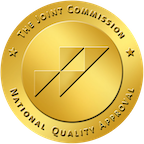Skip To Rehab Listing
Alcohol and Drug Treatment Facility Settings and Approaches
The large number of individuals who struggle with addiction in the Urbana area necessitate the presence of a variety of treatment centers, where patients can access the services they need in a suitable setting. These centers include the following: inpatient detoxification centers, outpatient individual counseling, short term drug and alcohol rehab programs, inpatient treatment centers, long term addiction treatment centers.
These treatment programs offer several different approaches to addiction treatment, allowing patients to find an approach that is effective for them. People seeking treatment can find any of the recovery methods available in Urbana like: 12-step facilitation approach, motivational interviewing, couple/family therapy, brief intervention approach, activity therapy, individual psychotherapy.
Special Programs for Substance Abuse Recovery
In order to achieve lasting recovery, people struggling with alcohol and drug abuse sometimes need specialized programs created for their unique circumstances. Urbana, IL. treatment centers deliver many programs including: persons who have experienced sexual abuse, transgender or (LGBT) clients, aftercare/continuing care, programs for the hearing impaired, seniors or older adults, active duty military.
Patients can ask about a facility's programs and approaches and receive guidance in finding the right treatment for their needs.
Treatment Payment Options
Alcohol and drug treatment programs also tailor their payment options to suit the various economic needs of their clients. In general, clients have several payment options for their treatment, such as the following: private pay, private insurance, medicaid, medicare, military insurance, state corrections or juvenile justice funds, access to recovery (atr) voucher.
Those looking for recovery should not allow money to be a barrier. Treatment centers can walk them through their payment options and assist them in finding an affordable solution.
Thanks to Urbana's many alternatives for drug and alcohol rehab and financing, individuals seeking help can get a suitable, tailored, and affordable treatment program.
Commonly Asked Questions about Addiction and Treatment
What are the effects of fentanyl?
Pain relief: Fentanyl's primary medical use is for pain relief, as it binds to opioid receptors in the brain and spinal cord to reduce the perception of pain and increase pain tolerance.
Euphoria: Like other opioids, fentanyl can produce feelings of euphoria by increasing the release of neurotransmitters such as dopamine in the brain, which can contribute to its potential for abuse and addiction.
Sedation: Fentanyl can cause drowsiness, sedation, and a general feeling of relaxation. In medical settings, this effect is often desirable, but it can be dangerous if the drug is taken recreationally or without proper supervision.
Respiratory depression: One of the most severe side effects of fentanyl is respiratory depression, which is a slowing of the breathing rate. This can lead to a lack of oxygen, resulting in brain damage, coma, or death, especially if taken in high doses or combined with other substances that suppress breathing.
Nausea and vomiting: Fentanyl can cause gastrointestinal side effects, such as nausea and vomiting, which are common among opioid users.
Constipation: Opioids like fentanyl can slow down the movement of food through the digestive tract, resulting in constipation.
Itching: Fentanyl and other opioids can cause histamine release, leading to itching or skin irritation in some users.
Dependence and addiction: Due to its potency, fentanyl has a high potential for dependence and addiction. Prolonged use can lead to physical dependence, withdrawal symptoms, and psychological addiction, making it challenging to stop using the drug.
Overdose: Fentanyl's potency increases the risk of overdose, which can be life-threatening. Symptoms of fentanyl overdose include extreme drowsiness, difficulty breathing, slow heart rate, low blood pressure, and unconsciousness. Naloxone, an opioid antagonist, can be administered to reverse the effects of a fentanyl overdose, but multiple doses may be required due to fentanyl's potency.
What is the purpose of drugs such as methadone, suboxone and subutex in the recovery process?
Methadone, Suboxone (a combination of buprenorphine and naloxone), and Subutex (buprenorphine) are medications used in Medication-Assisted Treatment (MAT) for opioid use disorders. Their primary purpose in the recovery process is to help manage withdrawal symptoms and reduce cravings, facilitating a safer, more comfortable transition to abstinence or long-term management of the disorder. Here's a more detailed look at how each of these medications function:
Methadone: Methadone is a long-acting opioid agonist, which means it activates the same receptors in the brain that other opioids like heroin, morphine, or prescription painkillers do. However, it does so more slowly and for a longer duration, without causing the intense euphoria associated with misuse of those drugs. This helps to mitigate withdrawal symptoms and cravings, enabling individuals to function more normally in daily life.
Suboxone: Suboxone contains two active ingredients: buprenorphine and naloxone. Buprenorphine is a partial opioid agonist, meaning it activates the opioid receptors in the brain, but to a lesser extent than full agonists like heroin or methadone. This can help manage cravings and withdrawal symptoms without producing the high associated with opioid misuse. Naloxone is an opioid antagonist, meaning it blocks the effects of opioids. It's included in Suboxone to discourage misuse of the medication; if someone tries to inject Suboxone, the naloxone will trigger withdrawal symptoms.
Subutex: Subutex is the brand name for buprenorphine alone. Like in Suboxone, buprenorphine in Subutex serves to lessen withdrawal symptoms and reduce cravings. It is typically used in the initial stages of treatment, while Suboxone is more commonly used for maintenance.
These medications are typically used as part of a comprehensive treatment plan that also includes counseling and behavioral therapies. It's important to note that while these medications can be highly effective in supporting recovery, they should be used under the guidance of a healthcare provider due to the risk of misuse and potential side effects. Each individual's treatment plan should be tailored to their unique needs and circumstances to ensure the best possible outcomes.
What are signs that my loved one is a drug abuser?
Identifying a loved one's drug abuse can be challenging as symptoms can vary depending on the substance being used, the duration of use, and the individual's personal circumstances. However, there are several signs that could potentially indicate drug abuse. These signs can be physical, behavioral, and psychological.
Physical Signs:
- Noticeable changes in appetite or sleep patterns
- Bloodshot eyes, pupils that are larger or smaller than usual
- Sudden weight loss or weight gain
- Unusual smells on breath, body, or clothing
- Tremors, slurred speech, or impaired coordination
- Neglect of physical appearance and personal hygiene
Behavioral Signs:
- Unexplained need for money, or frequent financial problems
- Engaging in secretive or suspicious behaviors
- Sudden change in friends, favorite hangouts, and hobbies
- Frequently getting into trouble (fights, accidents, illegal activities)
- Neglecting responsibilities at work, school, or home
- Unexplained absences or a drop in performance in work or school
Psychological Signs:
- Unexplained change in personality or attitude
- Sudden mood swings, irritability, or angry outbursts
- Periods of unusual hyperactivity or agitation
- Lack of motivation, appears lethargic or "spaced out"
- Appears fearful, anxious, or paranoid without reason













